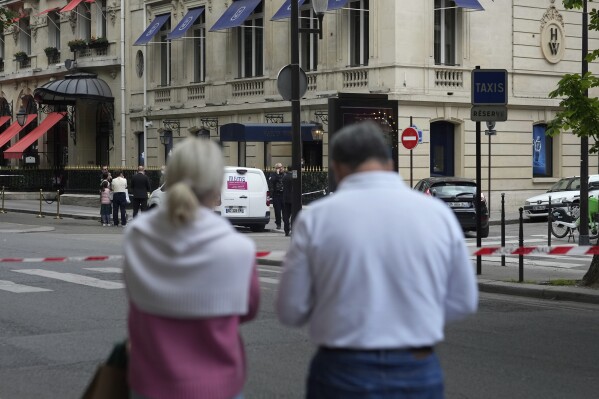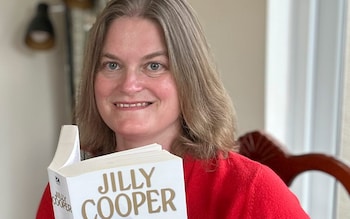Imagine if the Chelsea Flower Show gardens were films. The designers would be the directors, responsible for the vision. The flowers and plants would be the actors, arranged intelligently and coaxed into blooming at just the right time. And the producers? That would be the nurseries and builders, charged with making sure the artistic vision actually comes to pass.
In this analogy, Mark Fane and Peter Clay are the Hollywood super-moguls of horticulture. Forget your Dons, Titchmarshes or Sturgeons. Fane and Clay might never have been interviewed by the BBC, but they are the unsung powerhouses responsible for a staggering number of top Chelsea gardens for nearly a quarter of a century. As the men behind Crocus, the Berkshire-based nursery, they guide the garden design, grow the plants, source everything else, and oversee the construction of living works of art in SW3.
In total, they have been behind 36 show gardens, which have won 33 Golds, including an astonishing 12 Best in Shows, along the way working with every top designer you could name: Tom Stuart-Smith, Piet Oudolf, Arabella Lennox-Boyd, Dan Pearson, Cleve West, Sarah Price. In that mix were 12 gardens for The Telegraph, between 2006 and 2017. Eleven won gold, six won Best in Show.

“None of our competitors has won it more than once,” says Fane, sitting across the table from Clay in an office at the Crocus HQ in Sunningdale, Berkshire. “So in terms of bragging rights, that’s quite fun.” Outside, where the sun has at long last deigned to make an appearance, their team are making sure that the thousands of plants earmarked for Chelsea are coming along as hoped. It’s a special year. Twenty-four years after Crocus made its Chelsea debut, Fane and Clay are bowing out. The two gardens they are making this year, the National Garden Scheme Garden for Tom Stuart-Smith (their 11th collaboration with him) and the Muscular Dystrophy UK Garden for Ula Maria, will be their last.
“There’s a bit of a Jurgen Klopp-style moment of physical and emotional exhaustion,” says Fane, referencing the burnt-out Liverpool football manager who is also retiring in May. “We’ve got to a certain age now where it’s pretty knackering.”
Clay confirms that the plan has been in the works for a while. Like any double act, they have grown into the habit of finishing each other’s sentences.
“I’m afraid it was me who said I think I’ve got three years in me, I’ll retire when I’m 65,” Clay says. “[Mark’s] eked another year out of me. There’s a time for everything. And you come to the point when you can’t keep going on. It coincided with me thinking I would like to go walking in the Mani peninsula in May rather than have the stress of doing a flower show. Because let’s not beat around the bush: doing a Chelsea garden is mega-stressful. It’s not something you can solve by practice and repetition, because the vicissitudes of the weather, and the fact you have a different plant palette every year, means that there are plenty of things that can go wrong. And they always do.”
There are financial considerations, too. They have to give nearly a third of their 30-acre nursery to growing Chelsea plants, space which could otherwise be taken up by the core nursery business. “From a business point of view, it makes less and less sense as space on the nursery becomes more of a premium. That’s a sacrifice that isn’t compensated for by our remuneration, which is, at best, a face-washing exercise. It’s a diversion of focus. We should be focusing on the day job rather than trying to win a medal.”
The time they have been dominating the Chelsea Flower Show has also seen Crocus grow to become a giant of British nurseries. Fane, a former venture capital man, knew gardening via the family business, Waterers, which he ran with his brother Peter. He saw the potential in an online-only nursery. He recruited his friend Clay, an ad man, and they launched Crocus in 1999. Before the rise of online retail, Chelsea was a way to put themselves in the shop window.
“People would be nervous of buying unseen,” says Clay, “because everyone likes to go to the garden centre, select the best plant in the bunch and take it home. We couldn’t give that reassurance. And people hadn’t heard of us. A lot of gardening is the length of time families have been building the business. So Mark said, ‘Why don’t we show we can compete at the highest level?’”
Fane adds, “No other online plant retailer can say they’ve won even one gold medal at Chelsea. It gives us a significant point of difference. It underlines our horticultural credibility.” The secret to their success at the show, they say, has been meticulous planning: everything is laid out at the Crocus ground beforehand, so every plant can be assessed. It doesn’t mean they don’t have to deal with the unexpected. In 2015, Dan Pearson was about to put 350 tons of rock down in this Chatsworth garden when they realised it would be resting just above the Victorian sewer system that runs beneath the Royal Hospital. “Someone said, ‘I don’t think you should do that’,” recalls Fane. “We had to think pretty quickly. If we’d broken that sewage system, that would have been the show called off. That was quite a low moment.”

Then there are the plants, which can be capricious. One year they brought a tree up, only to realise that it was dying. Again, quick action had to be taken, late one night during the build-up. “It wasn’t going to make it,” says Fane. “But one feels bad taking a chainsaw to Chelsea.” Climate change is making timing the plants even more difficult.
Crocus’s run at Chelsea has coincided with some testing times for the show itself. As the costs of a show garden have risen – from £20,000-30,000 when Crocus started, to 10 times that today – corporate sponsors have dwindled. The show has found itself under attack on environmental grounds. Critics have argued that it is wasteful to erect a festival of horticulture that only lasts a week. The planting trends at Chelsea are often years ahead of the rest of the world.
“Often things are way ahead of the trends, but not recognised for being so,” says Clay. “Dan Pearson’s garden in 2015 is a good example. It was the first time we’d been asked to create a natural meadow, which is possibly the most difficult thing to do. Nature is way better at doing it than humans are.” Looking back over the history of the Crocus gardens, an evolution is clear: away from the highly formal manicured garden towards a more naturalistic approach. The most revolutionary of these was Lulu Urquhart and Adam Hunt’s Rewilding Garden, which won Best in Show in 2022 but caused controversy among those who thought it wasn’t a garden at all. “It was beautifully done, but is it a garden?” says Fane. “I don’t know how you judge that.”
Clay adds, “I don’t think even Lulu Urquart considered it a garden. They were building a slice of nature. The difficulty is for designers to know what the ground rules are. If something like that happens, it’s hard to feel happy that everyone’s in the same ballpark.”
These days, most of the gardens are sponsored by Project Giving Back, a somewhat mysterious organisation which pays for show gardens that work with charities. Fane is a trustee. But its sponsorship is tapering towards an end in 2026 and it is unclear where the money will come from to replace it. “It will be a really sad day when Project Giving Back gives up,” Clay says. “I don’t know what the RHS will do when the sponsor of 15 gardens goes.”
As custodian of the Chelsea Flower Show, the RHS is the focal point for criticism of the show. As a trustee of the RHS for 10 years, Fane says he is “biased”, but concedes that the entry form for gardens, once a simple document, is now “tiresome”. A bigger problem than the show gardens is the main tent, once a Champions League of the top nurseries in the country, now a rather diminished affair.
“The challenge they have is persuading nurseries to come to central London to exhibit at a busy time of year,” Fane says. “The RHS needs to get on the front foot about that.”
Clay agrees, stating that “everyone is sad at the lack of some of the great older nurseries at Chelsea.” He added “the barrier to entry is getting higher, the costs are getting higher and the rewards are getting lower, unless there’s a real incentive or wish for the RHS to say, ‘Here at the best show in the world are the greatest representatives.’ But there’s a feeling that’s not what the RHS want. They have other agendas they’re pursuing, about inclusivity, children, whatever. It’s not necessarily about horticulture at the highest level.”
He continues, “There is a sense that perhaps Chelsea isn’t receiving the attention it deserves from the RHS, in a number of ways. My sadness is genuine, because as a child those exhibits in the tents were extraordinary, and the brilliance of the growers to do that every year is exceptional. When they go, and that skill goes, you feel sad. It could have been avoided.”

One measure that isn’t going anywhere is sustainability, another area of focus of which Clay is wary. “I have a problem with the concept,” he says. “The show is not sustainable. One has to do what one can, but ultimately it’s jolly difficult to say that a showground in the middle of London for one week can ever be sustainable.”
These are bigger questions. For now, Fane, Clay and their team of experts must focus on getting their final two Chelsea gardens ready. “I’ll feel sad,” says Fane. “But I’m also aware that it’s better to walk off the pitch than get pushed off.”
As Chelsea’s golden geese prepare to make their departure, one group, at least, will be delighted to see the back of them: the competition.
Disclaimer: The copyright of this article belongs to the original author. Reposting this article is solely for the purpose of information dissemination and does not constitute any investment advice. If there is any infringement, please contact us immediately. We will make corrections or deletions as necessary. Thank you.



